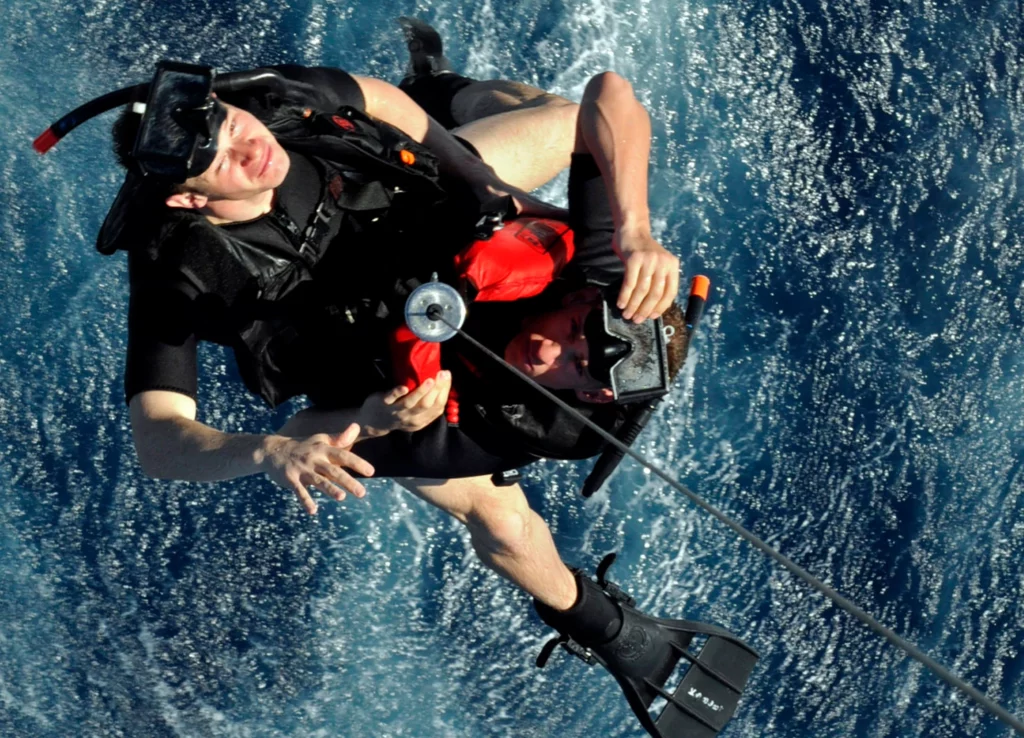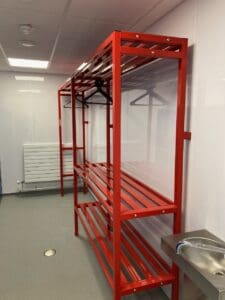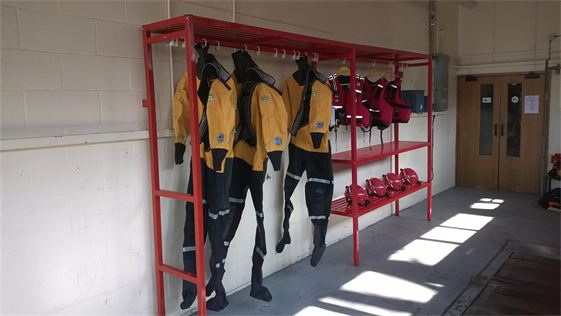Care and Maintenance of Nylon Webbing and Materials

Ounce for ounce, nylon webbing is usually stronger than the steel it’s connected to in our line of work. When putting a 30KN carabiner up against the harness it’s attached to, it’s usually at least a fair fight. But unlike the steel connection point – the V-Ring, carabiner, hook – that your harness is connected to, the nylon webbing and materials are almost always getting weaker every time you use them.
Not to worry, however. Perform good maintenance and inspections at the proper intervals and your harness will stay stronger than the hoist cable for a very long time. Understanding what goes wrong in nylon and why will help you better care for your gear and make sure it stays as tough as it needs to while your out there doing the job.
Watch Your Salt (and Chlorine):
Salt deteriorates nylon due to its chemical properties and the interaction between the those chemicals and the fibers on the nylon. Both nylon and salt are hygroscopic, meaning they both have the ability to attract and absorb moisture from whatever is around them. When salt comes into contact with nylon it absorbs moisture from both the environment and this water absorption creates a high humidity environment within the nylon itself. This humidity then works to break the chemical bonds in the nylon polymer chains (hydrolysis), leading to a deterioration of the material’s properties. The sodium and chloride ions in the salt can also affect nylon polymers disrupting the arrangement of the polymer molecules and causing structural damage.

Rinse, Dry, Repeat:
To extend the life of nylon materials, rinse them thoroughly with fresh water after salt water immersion or even exposure to saltwater mist. By removing the salt as soon as possible, rinsing and then drying the material, hydrolysis is halted and extends the life of the nylon. Harnesses and life vests should be rinsed with fresh water. Just a couple of minutes under full running water should be enough the the harness should be hung to dry, preferably inside or covered and out of direct sunlight.
Investing in dedicated drying spaces with racks, drainage, and climate control can significantly extend the service life of all materials exposed to salt or to the chlorine in pools. These racks, from Premier Lockers in the UK for example, can be setup in an indoor space with drainage in dedicated spaces for storing gear.


Sun Exposure = Bad:
Exposure to UV light is another environmental hazard for nylons. Like chlorides and humidity, it can break down the structure nylon and weaken it over time. Nylon 6/6 – which is what most Mil-Spec nylon is made from for its superior abrasion resistance – is more susceptible to this breakdown than other nylons but it is a trade off worth making. One of the things to mitigate this breakdown is the coloration of the nylon; black dye protects the nylon from UV which is one good reason all LSC load bearing nylon is black.
You can’t do anything about the normal day to day wear in the field, but you can make sure to store your load-bearing nylons out of the sun and therefor away from windows. Those who store load bearing nylon webbing on the aircraft should consider covering the windows if the aircraft is going to be sitting on the ramp for days at a time.
If you are worried about the patient restraint straps on your Lifesaving Systems litters, worry less. They are not made from nylon but rather a solution-died polyester with superior U.V. resistance.
Have a Look – Inspections:
After rinsing when exposed to salt or chlorine and minimizing exposure to U.V., the best way to ensure the safety and security of load-bearing nylon is to inspect it as often as you use it. Pre and post flight inspections of the webbing and nylon supporting materials should include a thorough look at every inch of harnesses and restraint devices for any damage to your webbing and load bearing stitches. There is no reason a properly inspected, maintained, and cared for harness can’t make it to a full ten year service life. Just remember to keep it clean, dry, and out of the sun when not in use and to never take the condition of your equipment for granted.
For inspection criteria and instructions for continued airworthiness of all Lifesaving Systems gear, create an account at support.lifesavingsystems.com for access to all manuals.
Stay safe out there.

